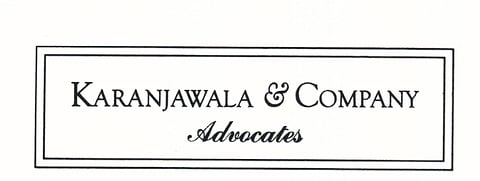
- Latest Legal News
- News
- Dealstreet
- Viewpoint
- Columns
- Interviews
- Law School
- Legal Jobs
- हिंदी
- ಕನ್ನಡ

Meghna Mishra and Ankit Rajgarhia
Introduction
One of the conditions for admission of an application by an operational creditor to initiate insolvency proceedings against a corporate debtor by the Adjudicating Authority (i.e. the National Company Law Tribunal or NCLT) in the Insolvency and Bankruptcy Code (IBC) is that no notice of dispute should be received by the operational creditor or there should be no record of dispute in the information utility. [Section 9(5)(i)(d)].
The word “Dispute” is significant for the maintainability of every application filed under Section 9 of the IBC. As per the IBC, dispute includes a suit or arbitration proceedings relating to (a) the existence or the amount of debt; (b) the quality of goods or service; or (c) the breach of a representation or warranty [Section5(6)]. This
The meaning of the word ‘dispute’ has been the concern of many judicial consideration. In K. Kishan Vs. M/s Vijay Nirman Company Pvt. Ltd. [Civil Appeal Nos. 21824 & 21825-2017], the Hon’ble Supreme court further expanded the scope of this word by including a challenge to an arbitral award under Article 34 of the Arbitration and Conciliation Act, 1996 (“Arbitration Act”).
Issue
Whether the Insolvency and Bankruptcy Code, 2016 can be invoked in respect of an operational debt where an Arbitral Award has been passed against the operational debtor, which has not yet been finally adjudicated upon that is the award is pending challenge under section 34 of the Arbitration Act.
Facts
Judgement
The Hon’ble Supreme Court held that the pendency of a petition under Section 34 of the Arbitration Act constitutes a ‘dispute’ under the IBC. Thereby, the IBC cannot be invoked to initiate the corporate insolvency resolution process (CIRP) in respect of an operational debt where an Arbitral Award has been passed against the operational debtor, though has not yet been finally adjudicated upon due to a challenge under Section 34 of the Arbitration Act.
Reasoning
Analysis
In the Molibox Innovation Case, the Hon’ble Supreme Court held in determination of “existence of a dispute”, NCLT is to satisfy is whether there is “a plausible contention which requires further investigation and that the “dispute” is not a patently feeble legal argument or an assertion of fact unsupported by evidence.” Moreover, NCLT should reject “a spurious defence which is mere bluster”, in this determining process whether dispute exists or not, the NCLT is not required to satisfy itself that the defence is likely to succeed or to examine the merits of the dispute. Consequently, NCLT should reject the application of an operational creditor if the dispute truly exists in fact and is not spurious, hypothetical or illusory.
In the present case, the dispute was not a patently feeble legal argument or an assertion of fact unsupported by evidence, the cross claim filed by Appellant bore some significance. The Appellant challenged the arbitral award due to the rejection of Appellant’s cross claim. The Appellant’s cross claim was of a much higher value, and if it were to be allowed in the challenge proceedings, the appellant would not owe any debt to the Respondent.
Consequently, even though as per the Mobilox Innovation Case, NCLT is not required to satisfy itself that the defence is likely to succeed or to examine the merits of the dispute, a baseless challenge of the Arbitral Award under the Section 34 of the Arbitration Act would not constitute under section 9 of the IBC since NCLT is still required to satisfy whether there is “a plausible contention which requires further investigation and that the “dispute” is not a patently feeble legal argument or an assertion of fact unsupported by evidence.”
About the authors: The authors are lawyers working at the law firm Karanjawala & Co. Meghna Mishra is a Partner at the form. Ankit Rajgarhia is a Senior Associate.